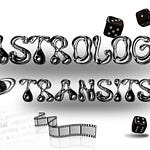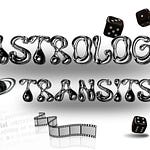1. The Femme Fatale
• Unevolved Stage: In the beginning, the Femme Fatale may see her allure as her primary asset. Her power feels tied to attraction, seduction, and control within relationships. She may approach love with a need to dominate or seek validation from her ability to captivate others, often mistaking physical attraction for emotional connection.
• Awakening Stage: Through experiences that may bring unfulfilling connections or even betrayal, she starts realizing the hollowness of power rooted solely in physical attraction. This stage prompts her to look inward, questioning her reliance on appearance and external validation.
• Evolved Stage: She understands that true power comes from self-assuredness, not manipulation. Her allure shifts from the physical to the energetic—her presence, confidence, and authenticity. In this stage, the Femme Fatale embodies a quiet power, creating connections that are mutual and based on respect, rather than dominance or control.
2. The Golden Retriever
• Unevolved Stage: The Golden Retriever archetype initially represents a woman who is eager to please and heavily reliant on approval from her partner. In this phase, she often puts others’ needs ahead of her own, seeking affection and approval in exchange for loyalty and effort.
• Awakening Stage: Over time, she may encounter relationships where her efforts are unreciprocated, leading to exhaustion and a sense of depletion. This stage is often marked by realizations around boundaries, as she begins to notice how her kindness is sometimes taken for granted.
• Evolved Stage: She learns to embody her kindness without compromising her boundaries or self-worth. She now offers support and affection from a place of choice, not obligation. The evolved Golden Retriever understands that loyalty must be mutual, and she’s selective about where she invests her energy, cultivating relationships that honor her independence as well as her warmth.
3. The Black Cat
• Unevolved Stage: In her initial stages, the Black Cat archetype might embody independence to the point of emotional detachment. She avoids vulnerability and intimacy, holding her independence as a shield against potential hurt. Her aloofness is often a way of self-protection, and she may shy away from deep relationships.
• Awakening Stage: Through relationships where she is challenged to open up, she starts to see that detachment is not the same as strength. Experiences of isolation or loneliness may prompt her to explore intimacy in a healthier way, realizing that her independence can coexist with vulnerability.
• Evolved Stage: The Black Cat archetype, at this evolved stage, becomes a balanced embodiment of independence and intimacy. She chooses relationships that respect her need for personal space while allowing her to be emotionally present. She’s self-assured in her independence but also open to deep, meaningful connections, understanding that real strength lies in both autonomy and emotional openness.
4. The Muse
• Unevolved Stage: In the unevolved Muse stage, a woman may perceive herself as valuable only in how she inspires others, often losing her sense of self. Her worth feels tied to what she brings to a partner’s life rather than her own ambitions or desires.
• Awakening Stage: Through relationships where her role as a “muse” is exploited or taken for granted, she begins to see the imbalance. This stage often involves realizing that she has placed herself in the background and that her dreams are just as important as her partner’s.
• Evolved Stage: The evolved Muse embodies creativity and inspiration as intrinsic qualities rather than tools for others’ benefit. She stands as an equal partner, inspiring and creating within her own life. She recognizes her worth beyond others’ admiration, embracing her ability to inspire herself and lead her life with purpose.
These archetypes are stages in the evolving consciousness of divine feminine energy, where a woman learns to balance her unique strengths and desires with healthy boundaries and self-respect. Each relationship serves as a mirror, helping her move from external validation toward self-recognition and acceptance until she reaches an integrated, empowered sense of herself.












Share this post